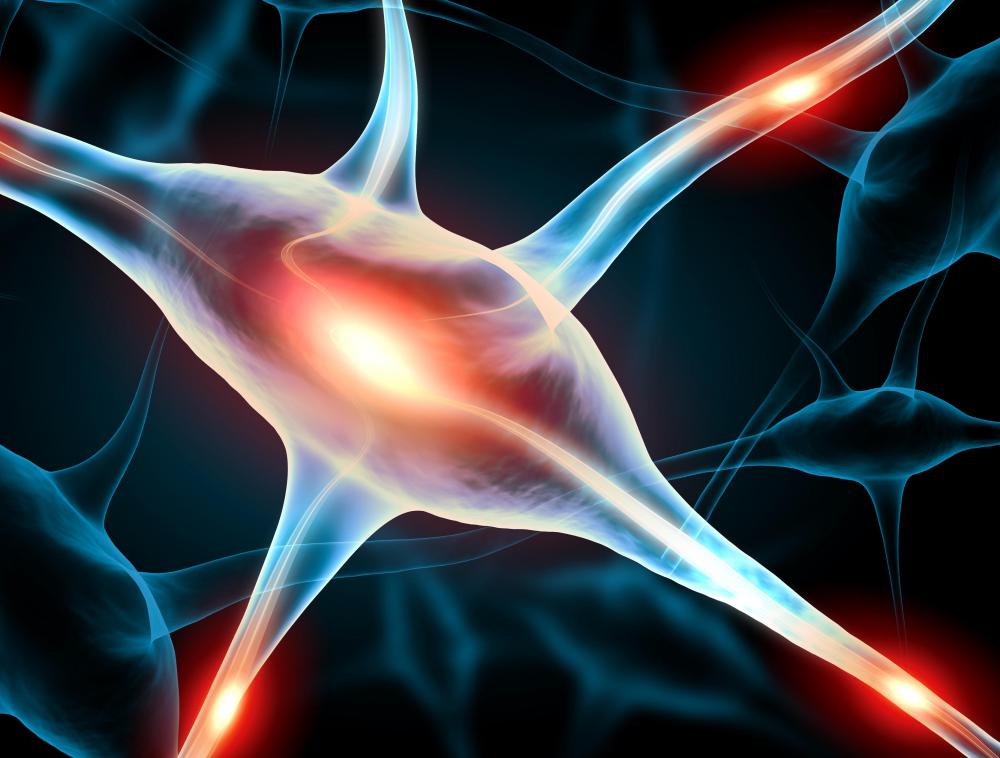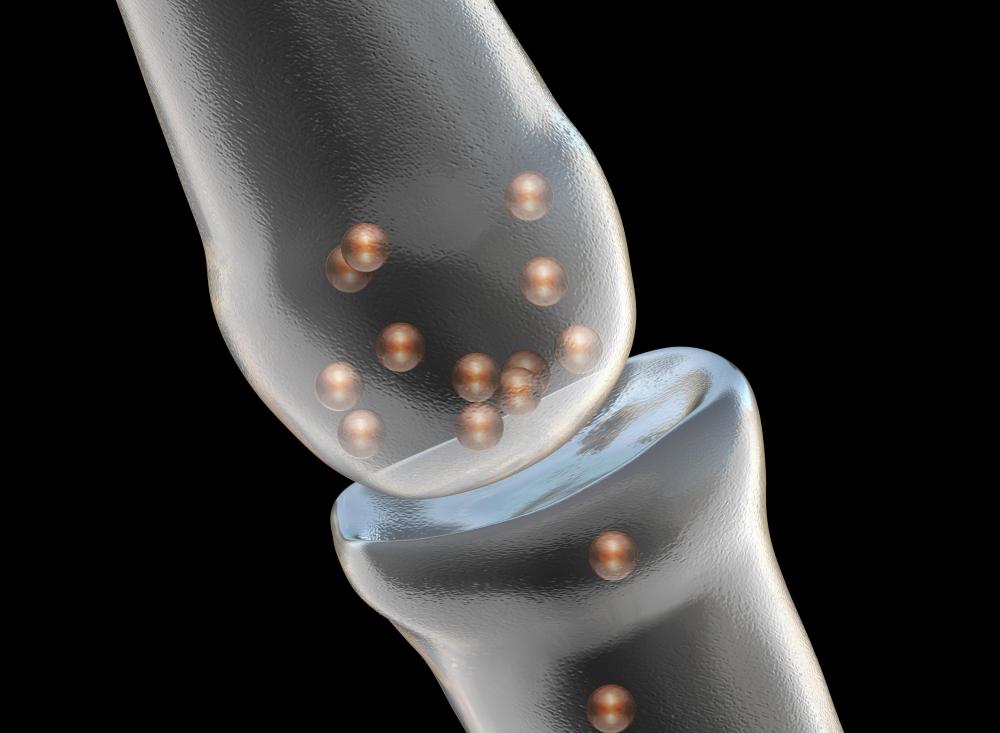At TheHealthBoard, we're committed to delivering accurate, trustworthy information. Our expert-authored content is rigorously fact-checked and sourced from credible authorities. Discover how we uphold the highest standards in providing you with reliable knowledge.
What is the Function of a Neuron?
The function of a neuron cell is to transmit information. This makes it an integral part of the body’s nervous system. Neurons are also called nerve cells, neurones and neurocytes. Neurons are able to network together and transmit information throughout the body using electrical and chemical signals.
Neurons contain the basic elements of a cell, including the membrane, the nucleus and cytoplasm. These are contained in the main neuron body, known as the soma. In addition to the soma, the neuron contains an axon and a number of dendrites. The axon can be as long as 3.3 feet (1 meter) in length and can send signals to the dendrites of the next neuron. Dendrites are filaments that receive information from another neuron’s axon.

Neurons often have thousands of branches that allow its axon to connect to other neurons. If a neuron is imagined looking like a jelly fish, and then dozens of jelly fish are envisioned holding hands, it might provide an idea of what interconnected neurons look like. The neurons are not touching; there is a miniscule gap between each cell known as the synaptic gap or synapse.

The body uses the function of a neuron cell to power the nervous system’s three main functions. The nervous system senses changes in internal and external conditions, investigates these changes and responds to them. The nervous system comprised the brain, spinal cord and nerve cells that link these to muscles and glands across the body.
The specific function of a neuron is to help the brain, itself made up of billions of neurons, to remember, learn and reason. The body is able to react based on information sent and received by the neurons. In order to react, commands are sent from the brain to muscles and glands via neurons. Commands can either be excitatory or inhibitory. These cause more or less activity in the targeted neuron or neurons.

The function of a neuron is performed by sending chemicals across the synaptic gap from one cell to another. These chemicals are known as neurotransmitters. Some are created and stored in vesicles until needed, while others are moved to the vesicles from elsewhere.
Action potentials, or commands, activate the function of a neuron when it reaches the cell. The neuron then allows calcium ions to fuse with the vesicle membranes and releases the neurotransmitters contained within. The neurotransmitters spill into the synaptic gap when this happens and activate receptors in the next neuron’s dendrites.
AS FEATURED ON:
AS FEATURED ON:














Discussion Comments
@Kat919 - Myelin makes signals travel faster. Basically, myelin wraps around the neuron in several strips sort of. The nerve signal jumps from one gap to another by saltatory conduction instead of having to travel slowly. Problems with the myelin sheath cause neurons to fire more slowly, which is very bad.
Lorenzo's Oil was based on a true story of a boy who had a leukodystrophy. That's a disease that comes in several forms - he had the worst form, which attacked the neurons in his brain. The oil does seem to slow down or prevent the disease.
So how does myelin relate to the function of the neuron? I remember watching that movie "Lorenzo's Oil" years ago. Wasn't the problem that his myelin sheaths were degenerating? And that caused all sorts of problems for him. The oil helped stop it from deteriorating, or something like that.
But I don't remember what myelin was or why it was important.
Post your comments